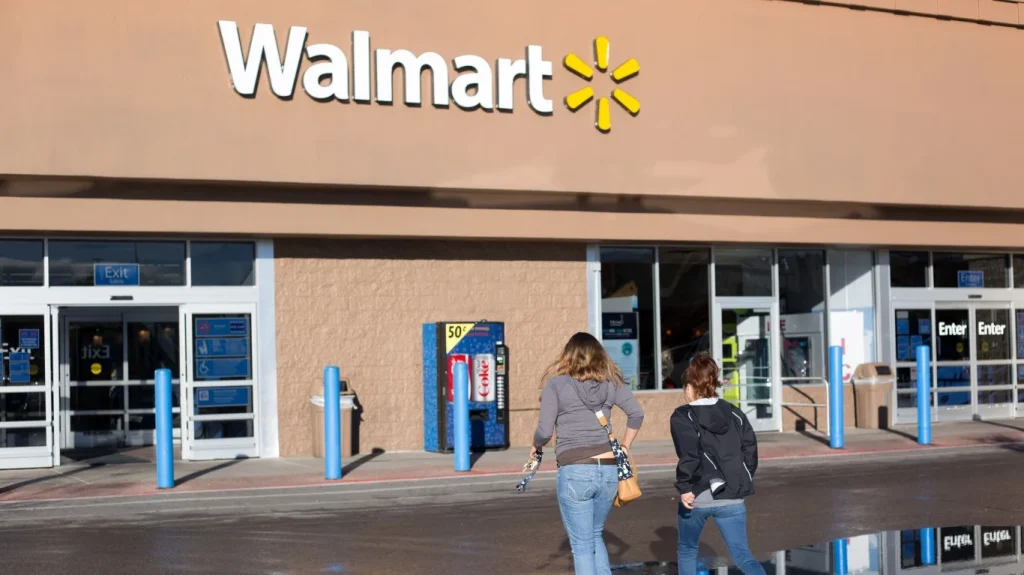S&P 500, Nasdaq at record highs as lukewarm inflation fuels rate-cut bets-Markets

Investors pushed stocks to fresh records as tepid inflation data lifted bets that the Federal Reserve will cut rates. The S&P 500 and Nasdaq both rose more than 1%.
Tech stocks boosted the S&P 500, with Nvidia and Microsoft rising. Investors also waited for the start of earnings season, with Delta Air Lines and JPMorgan Chase scheduled to report.
Review about Standard and poor’s
The S&P 500 and Nasdaq shattered fresh all-time record highs on Wednesday, as benign inflation data fueled expectations that the Federal Reserve will cut rates soon. Investors had worried that rising rates would hurt corporate profits and push investors toward riskier assets like cash and government bonds, but lukewarm inflation has dampened those fears.
The index consists of 503 stocks that represent the large-cap portion of the US stock market, with each company getting weighted according to its market capitalization. Traders use the index as a benchmark for the market, and it is the most widely followed index in the world.
Despite the new records, not all stocks rose. Medtronic (MDT) dropped more than 4% after the medical device maker reported quarterly earnings that missed estimates. Shares of chipmaker GlobalFoundries (GFS) fell more than 8% after the holder Mubadala Technology Investments offered $950 million of shares via Morgan Stanley and Bank of America Securities. Live Nation Entertainment (LYV) lost more than 3% after the Justice Department and a number of states announced an antitrust lawsuit over the concert ticket seller’s unrivaled control over the industry.
Standard & Poor’s is known around the world for creating financial market indices that are used as investments and as a source of credit ratings. Its roots trace back to 1868, when the firm was founded by two companies: Poor’s Publishing, which published railroad industry guidebooks, and the Standard Statistics Bureau, which published financial data on stocks. The company merged in 1941, and McGraw-Hill Cos bought it in 1966.
Standard and poor’s with Microsoft
The Standard and Poor’s 500 Index, or S&P 500 for short, is one of the most widely-watched indices in the world. It is comprised of the 500 largest companies in the U.S. and represents 80% of the total market value of all U.S. stocks. The S&P 500 is often used as a proxy for the overall stock market, and many investors own shares in this popular index in order to diversify their portfolios.
Stocks have been rallying all week as cooling inflation lowered the pressure on the Federal Reserve to raise interest rates this year. On Friday, the May core PCE deflator eased to +2.6% y/y from +2.8% in April, right on expectations and the slowest pace of increase since 2015. Strength in chip stocks also supported the markets.

A rally in tech stocks lifted the S&P and Nasdaq to record highs, as gains in mega-cap technology firms boosted the benchmarks. AI chipmaker Nvidia (NVDA) climbed 2.5%, and Microsoft (MSFT) rose 0.4%. Both of these are heavily weighted in the S&P, meaning their stock moves can sway the entire index. The two firms alone account for over 4% of the S&P’s gains this year. That shows the massive sway that large, highly-weighted stocks can have on the market as a whole. It is a phenomenon that is a result of the way that the S&P 500 is constructed.
Standard and poor’s with Apple
Boosted by gains in megacap tech, the S&P 500 and the Nasdaq both notched record closes on Wednesday. Apple shares rose more than 7% to lead the S&P, as investors digested the iPhone maker’s announcements on new artificial intelligence features at its Worldwide Developers Conference including the integration of ChatGPT. Chipmakers were also big winners, with Intel (INTC), AMD (AMD) and Nvidia (NVDA.O) all rising more than 1%.
Investors also focused on fresh economic data ahead of a key inflation report and a Fed rate-setting meeting. Core inflation, which excludes food and energy prices, slowed to its lowest level in three years in April, fuelling hopes that the Federal Reserve will eventually cut interest rates to boost growth.
Financial stocks fell as interest rate worries lingered. Banks including JPMorgan Chase (JPM.N) and Wells Fargo & Co (WFC.N) dropped around 1.2%. Macy’s shares jumped nearly 9% after reports that private equity funds Arkhouse Management and Brigade Capital had raised their bid for the department store chain.
The index combines the performance of 500 stocks that have a market capitalization of more than $14.5 billion. In order to qualify for inclusion, the company must have a history of profitable operations and a stock price that has traded on a public exchange for at least 12 months. The S&P 500 is calculated by S&P Dow Jones Indices and S&P Global Ratings, which was acquired by McGraw-Hill in 2012. The index was first created in 1957 as a merger between Poor’s Publishing, publisher of railroad industry guidebooks, and the Standard Statistics Bureau, a provider of financial data on companies.
Read More Articles: Oil Prices Rise On Moderate US Inflation Data Strong Demand
Standard and poor’s with Walmart
Stock indexes settled moderately higher as easing US price pressures knocked T-note yields lower and bolstered the chances of Fed interest rate cuts this year. The University of Michigan’s July consumer sentiment survey unexpectedly fell to an 8-month low, reinforcing speculation that the Fed can cut rates in September. A rebound in chip stocks also boosted the overall market.
The S&P 500, which represents the largest public companies in the U.S, is made up of 11 sectors, 24 industry groups, 69 industries and 158 subindustries. Each of these categories is assigned a weighting in the S&P based on their market capitalization, and the S&P 500’s index level is determined by that weighting. The most common weightings are for large-cap stocks like Apple and Nvidia.

Tech stocks were the biggest winners in the holiday-shortened session, with gains fueled by megacaps like Microsoft (MSFT.O), opens new tab, Apple and Nvidia. The S&P 500 information technology sector (.SPLRCT) closed at a record high, while the S&P 500 communications services sector (.SPLRCL) ended at its highest level since 2000. Shares of Macy’s (M.N) rose 5.7% after the department store operator’s quarterly sales beat expectations. Energy shares gained after a report that China may curb its crude oil production. Gold prices dipped, but they were still set for their fourth consecutive weekly increase.
Standard and poor’s with Nvidia
The S&P 500 and Nasdaq indexes both hit record closing highs on Wednesday, powered by technology stocks as investors digested economic data that boosted expectations for the Federal Reserve to cut interest rates soon. Nvidia (NVDA), the chipmaker favored by many investors betting on demand for artificial intelligence, was the S&P 500’s biggest boost as it closed above $3 trillion in market value for the first time.
Investors were also awaiting earnings reports from Walmart (WMT) and Campbell Soup (CPB), as well as Congressional testimony from Fed Chair Jerome Powell later this week. Easing inflationary pressure pushed odds of an interest rate cut in September to 79%, up from 66% before the latest jobs numbers were released.
The broader S&P 500 technology sector rose 0.5%, with gains led by chipmakers like Nvidia and Microsoft. Shares of Intel (INTC) jumped 1.4% and Apple added 1%. Software maker Oracle Corp (ORCL) rose 1.5% after a boost to its profit outlook.
The broader S&P 500 retail index was down 0.2%, with shares of Lululemon Athletica (LULU) falling the most after the yoga apparel company reported second-quarter results. Other notable names to fall included Dollar Tree (DLTR), Ollie’s Bargain Outlet (OLLI) and GameStop Corp (GME). Advancing issues outnumbered decliners by a 1.04-to-1 ratio on the NYSE, while the Nasdaq Composite was up 0.7pc. (Reporting by Ajay Jain; Editing by Mark Potter)
Read More Articles: Chinese Electric Cars Compete With Gasoline-Powered Cars in Europe and Beyond
Conclusion
The S&P 500 notched its first record close above 5,500 as the tech-laden Nasdaq Composite followed suit. The S&P’s move came after Fed Chairman Jerome Powell fanned September rate-cut hopes, citing recent economic data that has boosted consumer spending and corporate profits. Shares in chipmaker Nvidia (NVDA.O) jumped 2.5%, offsetting declines in rivals such as Microsoft (MSFT.O).
Investors are also looking forward to this week’s earnings reports, with Delta Air Lines (DAL.N) scheduled to report on Thursday. Banks JPMorgan Chase, Citigroup and Wells Fargo are set to release results on Friday, providing a glimpse into consumers’ debt levels and how lenders have managed them through the summer.
The S&P’s all-time high comes as investors remain cautious over inflation concerns and trade issues. Inflation readings have cooled, raising the possibility of a Federal Reserve interest-rate cut in September. That expectation has sent bond yields lower, boosting safe-haven demand for U.S. Treasury bonds. The benchmark 10-year note yield fell to 4.351 percent from 4.57 percent on Monday, its lowest since July 3, according to Barchart. The FTSE 250 index was up 0.7% at 9,859.38. AU Small Finance Bank, SBI and PNB were among the top gainers. ICICI Bank, Axis Bank and Kotak Mahindra Bank lost ground. The Nifty Bank index was down 0.44% at 49,700. The index is poised to recover if it breaches the 50,000 mark, but a fall below that level would prompt some short covering.

